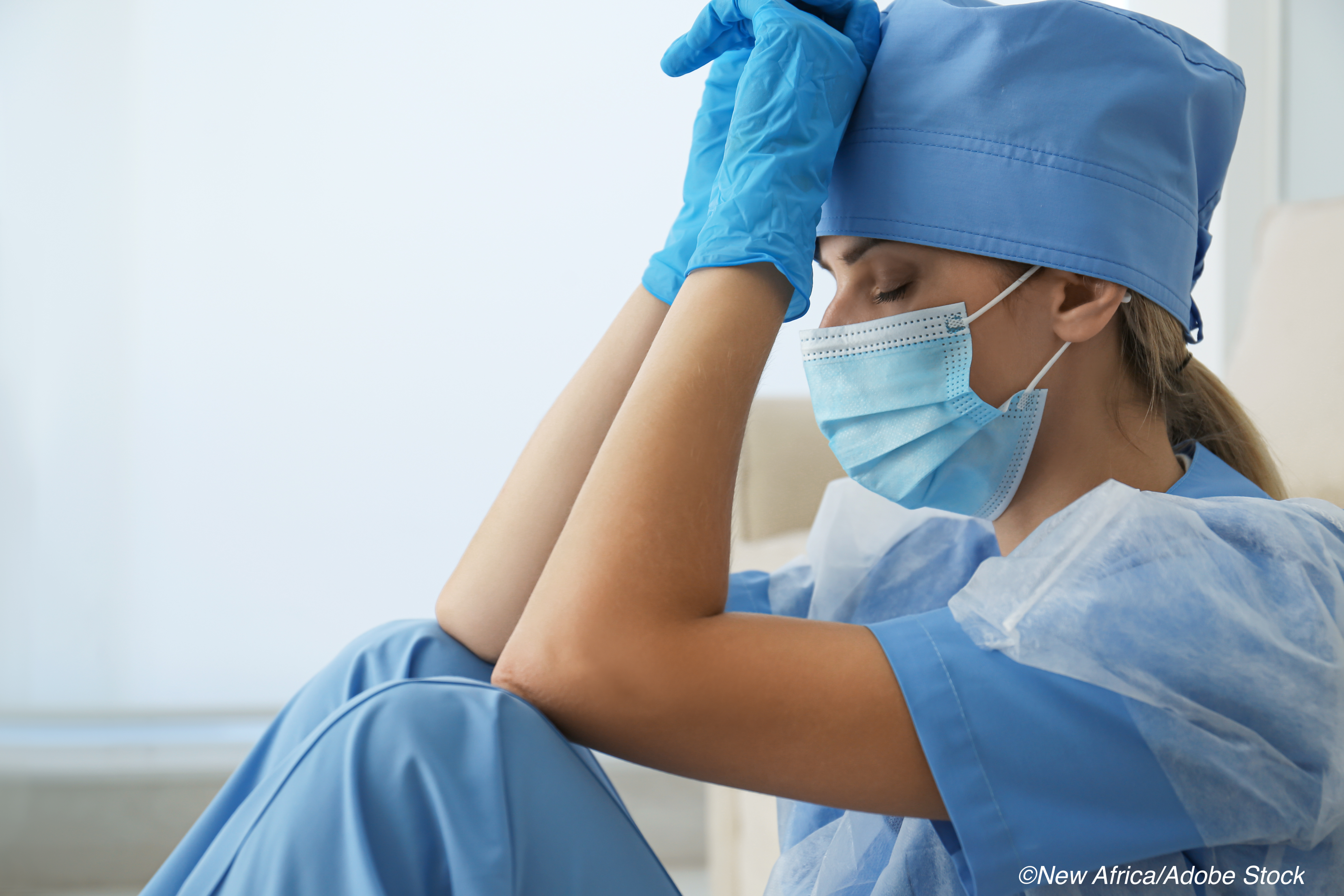Among health care workers in Italy early in the Covid-19 pandemic, prolonged contact to SARS-CoV-2-infected patients was a bigger risk factor for infection than exposure to the most severe cases, researchers reported.
Nurses and health assistants had a greater Covid-19 infection risk than doctors, and male health care workers were at greater risk than women in the cross-sectional study of medical workers in the Lombardy region of Italy during one of the early outbreaks of the disease.
Emergency department personnel, along with those working in palliative care units and hospital wards limited to convalescent patients and those with subacute or subclinical disease were found to have a greater risk for infection than intensive care unit (ICU) workers.
In fact, the study found that ICU workers had an infection risk similar to hospital telephone operators who had little or no direct contact with patients.
“This finding suggests that appropriate equipment and adherence to hygiene protocols may represent valuable strategies for protecting health care workers and may prevent transmission in health care settings,” wrote researcher Piero Poletti, PhD, of Italy’s Bruno Kessler Foundation Center for Health Emergencies, and colleagues, in JAMA Network Open.
The findings also suggest that equipment and training of health care workers “less accustomed to managing infectious disease but directly exposed to patients who may be infected with SARS-CoV-2 should be prioritized to decrease infection risks in health care settings,” Poletti and colleagues added.
The researchers noted that analysis of pooled data from different countries suggest that between 7% and just under 9% of health care workers have been infected by SARS-CoV-2 since the emergence of Covid-19, with “high variability across countries, ranging from 4% in Denmark to more than 13% in the United States,”they wrote.
“Heterogeneous infection risks across different categories of hospital wards and heath car professions have emerged as well, suggesting that frontline health care workers had greater exposure to SARS-CoV-2-infection compared with nonclinical staff.”
In the absence of comprehensive data on SARS-CoV-2 infection risk among health care workers across different departments and professional categories, the researchers conducted the cross-sectional study with data collected from Lombardy, Italy between April 1 through May 26, 2021, which represented the end of the first wave of the outbreak in that country.
Voluntary serological screening was offered to all clinical and nonclinical health care workers in the region during the period.
The association between exposures and IgG results positive for SARS-CoV-2 infection was examined using a generalized linear mixed-effects model. For the comparisons, administrative staff and telephone operators were considered to be the reference groups for the various professional categories and operational units.
“The rationale behind this choice was that these groups may represent proxies for the general population in terms of risk of SARS-CoV-2 infection,” the researchers wrote.
In all, a total of 140,782 health care workers were invited to participate in IgG serological screening, and 82,961 of them (59.0% response rate) were tested for SARS-CoV-2 antibodies. The median age of the participants was 50 years and 72% were women.
Among those tested, 10,115 (12.2%; 95% CI, 12.0%-12.4%) had positive results (median [IQR; range] age, 50 years; 72.2% were women).
The odds of infection among workers employed in intensive care units and infectious disease wards were not statistically significantly different from those of telephone operators, and statistically significant lower odds for infection was identified among workers in forensic medicine (aOR, 0.40; 95% CI, 0.19-0.88), histology and anatomical pathology (aOR, 0.71; 95% CI, 0.52-0.97), and medical device sterilization (aOR, 0.54; 95% CI, 0.35-0.84) compared to telephone operators.
“Statistically significantly higher odds of infection were found among health assistants (adjusted odds ratio [aOR], 1.48; 95% CI, 1.33-1.65) and nurses (aOR, 1.28; 95% CI, 1.17-1.41) compared with administrative staff and among workers employed in internal medicine (aOR, 2.24; 95% CI, 1.87-2.68), palliative care (aOR, 1.84; 95% CI, 1.38-2.44), rehabilitation (aOR, 1.59; 95% CI, 1.33-1.91), and emergency departments (aOR, 1.56; 95%CI, 1.29-1.89) compared with those working as telephone operators,” the study authors wrote.
Study limitations cited by the researchers included the imperfect sensitivity (94.4% sensitivity at 15 days from diagnosis) and specificity (98.3%) of the assays used to identify SARS-CoV-2 infection and lack of data on participants’ antibody levels and symptoms, underlying health conditions and contacts with people infected with the virus in and out of the workplace.
The researchers also noted that their findings may have been directly influenced by the way hospital wards and personnel were reorganized in the area as Covid-19 spread in the region.”These results suggest that when the health care system in Lombardy was operating at its maximal capacity to better face the pandemic threat, a remarkable proportion of health care personnel less experienced in treating infectious diseases were exposed to a high number of patients with SARS-CoV-2. The higher adjusted odds ratios of infection we found among these professionals may therefore have been associated with clinical settings and personnel insufficiently prepared or equipped to treat a huge number of patients.”
-
Nurses and health assistants had a greater Covid-19 infection risk than doctors, and male health care workers were at greater risk than women in the cross-sectional study of medical workers in the Lombardy region of Italy during one of the early outbreaks of the disease.
-
ICU workers had an infection risk similar to hospital telephone operators who had little or no direct contact with patients.
Salynn Boyles, Contributing Writer, BreakingMED™
Funding for this research was provided by the European Commission and a Foundazione Valorizzazione Ricerca Trentina Tento project. The researchers reported no disclosures related to Covid-19 or the submitted work.
Cat ID: 190
Topic ID: 79,190,730,933,190,926,192,927,151,928,925,934



